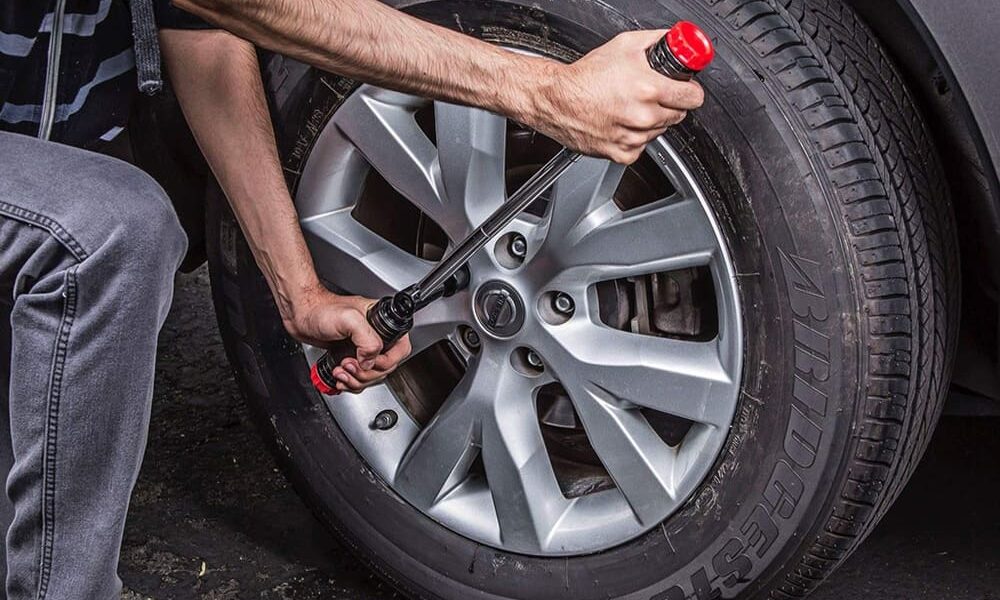
A shredded or punctured tire is not something you should ignore. If you procrastinate in repairing or replacing your tires, you may experience a huge tire bust right in the middle of the road. Such accidents can endanger the lives of your family and other drivers and passengers on the road.
Fortunately, changing a damaged tire can be quite easy. However, a lot of the time, we don’t have the necessary tools or the expertise to change our tires safely. Here are some vital dos and don’ts that you need to keep in mind when changing your tires.
Dos of Tire Changing
Here are some of the things that you should do when replacing tires:
Changing Tires in an Open Space: A large open space allows you to move around and use your tools easily. If you have a large garage or driveway, you can change your tires in there. However, if you are short on space, it is best to take your car to an auto repair service that can do the job for you.
Automotive repair and service companies have large spaces which they use to change their customers’ tires easily and conveniently.
Placement of the Jack: Cars are made differently based on the manufacturer and model. Hence, it is extremely important that you know where the jack needs to be positioned. Before you start changing your car’s tires, take a look at its manual to see where the car jack needs to be placed. Make sure you place the jack properly so it doesn’t slip off.
Use an Appropriately Sized Jack: If you have small standard-sized cars, a one-and-a-half ton jack will probably do the trick. However, if your vehicle is mid- to large-sized, this jack will not cut it. Make sure you get a three-ton floor jack for larger cars.
A jack that has a smaller capacity may become busted under the weight of the car and you would rather not have that happen.
Get Two Pairs of Jack Stands: Jacks can collapse under the weight of your car and can lose height significantly in a single hour. Although a single jack may be enough to change a tire, it is better to be on the safe side. Also, it is not a great idea to flex the frame of a car for a long time, so two jacks can enable you to properly lift the side of the vehicle you are working on.
Apply Brakes: Make sure you do not forget to apply the brakes on your vehicle, or it may move while you a replacing your tires. This can lead to severe injuries.
Use Wheel Chocks: Gravity can make your vehicle move forward, especially on an incline, even if you have applied the brakes. To make sure your vehicle remains stationary, apply 8-inch-long rubber or wooden wheel chocks.
Wear Protective Gloves: Tires are covered in dirt and muck. Get yourself a pair of leather gloves, or even latex gloves, when handling your tires. There is no reason why you should have grime beneath your nails when you are changing tires.
Don’ts of Tire Changing
Here are some of the things you need to avoid when changing your car’s tires:
Don’t Loosen the Nuts After Jacking Your Car: When you jack up your car and then try to loosen the nuts, your tire will simply spin in the air and the nuts won’t come loose. This is also quite dangerous as you can hurt yourself. Instead, the common-sense method is to loosen the nuts while the tires are on the ground to get the needed friction.
Don’t Tip your Car to One Side: One of the most dangerous things you can do is to tip your car on the side and balance it with a couple of jacks. Tipping your cars at dangerous angles just to replace a tire is a definite no-no. It’s not worth risking your life. If you are unsure how to change your car tires, get them changed at an auto service.
Don’t Rely On Your Jack: Do not rely on the jack when working under a vehicle. There have been a lot of injuries and death related to ill-manufactured jack stands that collapsed during inopportune moments.
Don’t Forget to Get the New Tire Out First: Before you start jacking your car, don’t forget to take out the spare tire from out the trunk. If you do this later, you may expose yourself to risk because of the greater height and tilted angle of the car.
Don’t Install Dry Nuts: Make sure your wheel nuts are properly greased before you tighten them in place. Water and differing temperature can cause the nuts to rust or gall. A small amount of anti-seize or penetrating lubricant on each nut can prevent problems in the future.
Tire repairs and replacement are very common, and the tools required to perform them are readily available. However, there is a specific way in which you should and shouldn’t use them.
Courtesy of paautoinspection










